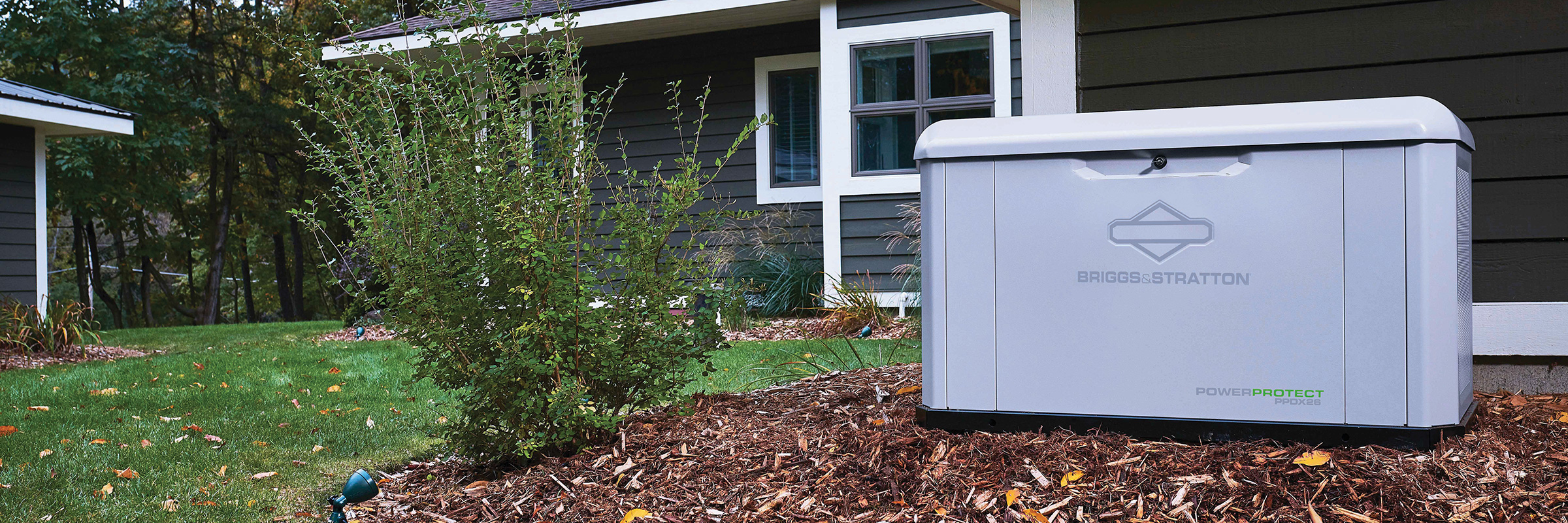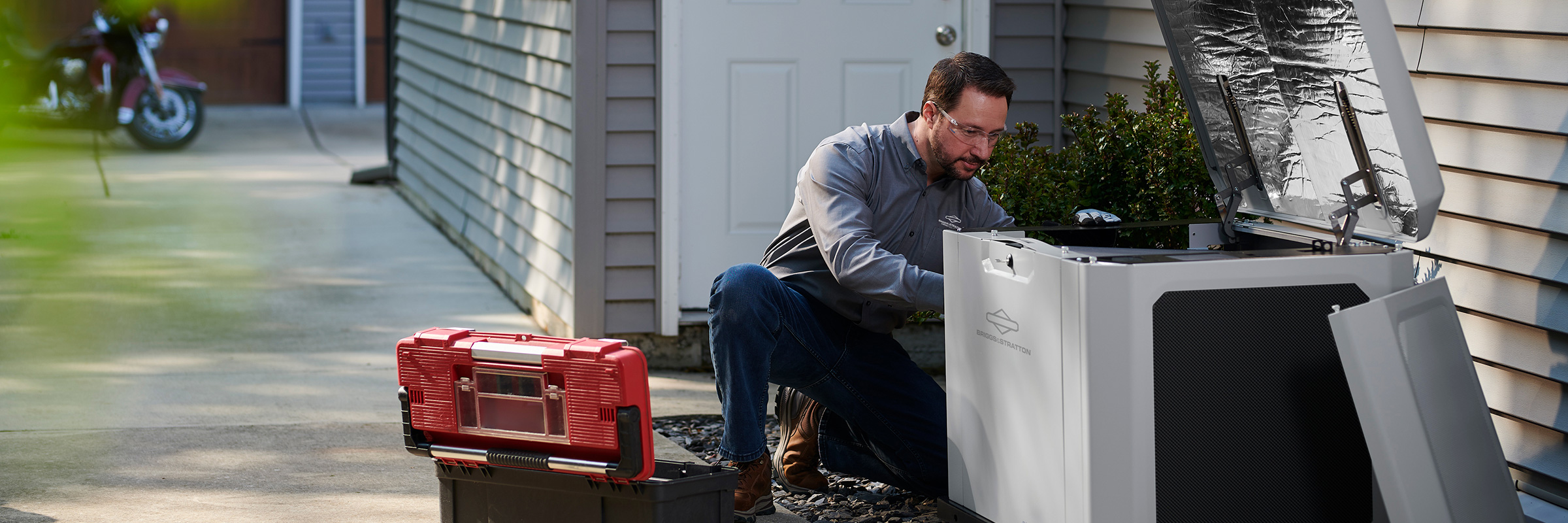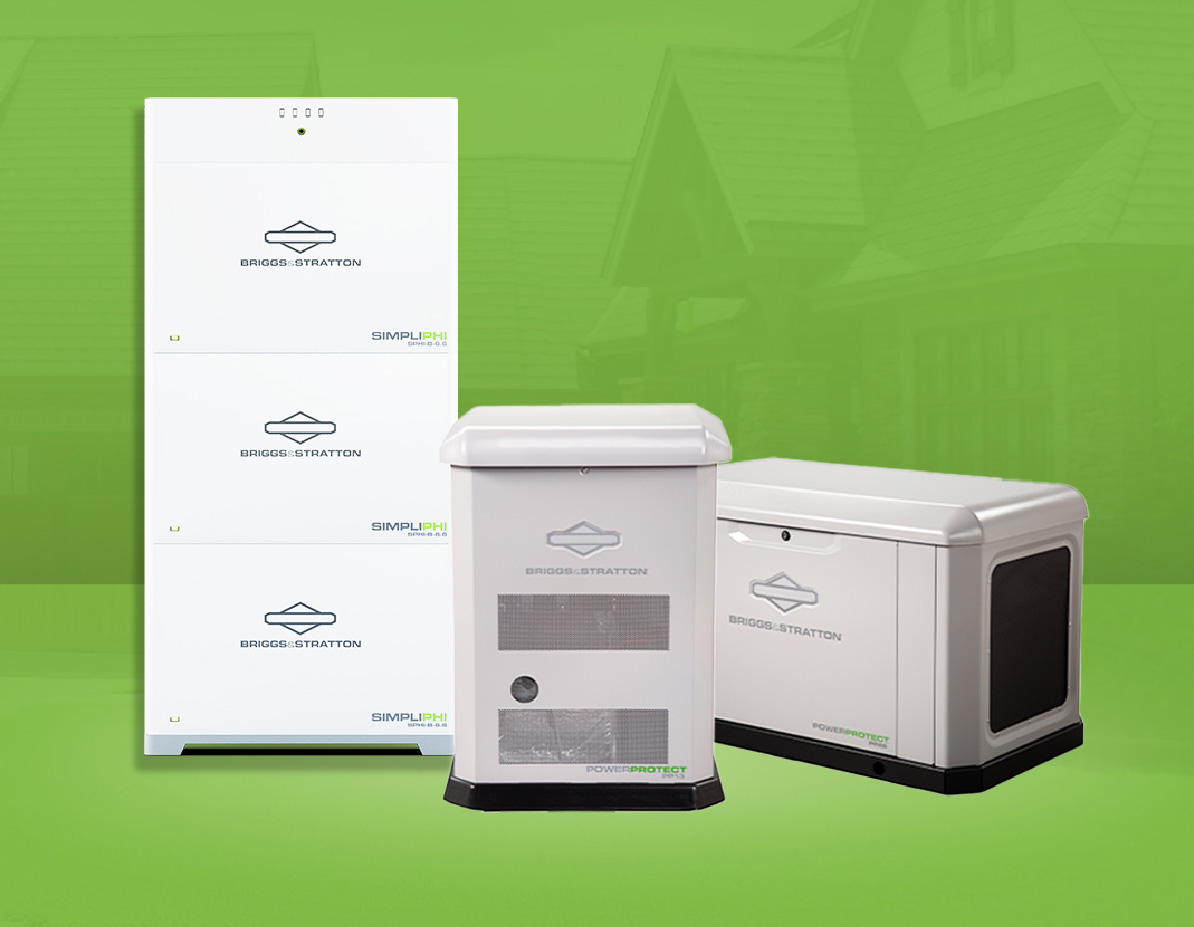Your standby generator is a powerful piece of engineering, a silent guardian protecting your home from the disruption of a power outage. But for it to answer the call every single time, it requires consistent care. Think of it like a highly trained athlete; it needs to stay in peak condition to perform flawlessly at a moment's notice.
As the engineers and experts behind your generator, we want to give you the insider’s guide to maintenance. This isn't just about following a manual; it's about understanding why each step is critical for reliability, longevity, and the peace of mind you invested in.

The Easiest—and Most Important—Weekly Habit
Most modern standby generators, including those from Briggs & Stratton, perform a weekly self-test exercise. This is a short, low-speed run that circulates engine oil, charges the battery, and confirms the unit is ready.
Your Role: Don't just ignore it.
Listen: Get familiar with the sound of a normal test cycle. Any new noises like sputtering, rattling, or grinding are early warning signs.
Look: Check that the status light on the generator or transfer switch remains green ("Ready"). If you see a yellow or red light, consult your manual or a service dealer immediately.
This simple, two-minute observation each week is your first line of defense.

Your Essential Maintenance Schedule: From Our Experts to You
We’ve broken down the key maintenance tasks into a simple schedule. Following this ensures every component, from the engine to the electrical system, is in top working order.
Frequency |
Maintenance Task |
The Briggs & Stratton Expert Insight |
Monthly |
Visual Inspection |
Look for any signs of leaks (oil or coolant), frayed wiring, or debris around the unit. Ensure vents are clear for proper airflow. This quick check can prevent small issues from becoming major failures. |
Battery Check |
The battery is the #1 cause of a generator failing to start. Check that terminals are clean and tight. A simple voltmeter test can confirm it’s holding a proper charge (typically above 12.4V). |
|
Every 6 Months |
Inspect Air Filter |
Your generator needs to breathe. A dirty air filter suffocates the engine, reducing power and burning excess fuel. Hold it up to a light; if you can't see light through it, it's time for a replacement. |
Check Engine Oil Level |
Just like in your car, low or dirty oil is the fastest way to cause engine damage. Pull the dipstick, wipe it, re-insert it fully, and check the level. Top off if necessary with the manufacturer-recommended oil type. |
|
Annually (or per hour-meter) |
Change Engine Oil & Filter |
This is non-negotiable. Annual oil changes remove contaminants and preserve the engine's integrity. Pro-Tip: For a brand-new generator, the first oil change after just 20-30 hours of runtime is crucial for removing break-in metal particles. |
Replace Air Filter |
Even if it looks clean, replace the air filter annually. Paper elements degrade over time, and a fresh filter is cheap insurance for engine health. |
|
Replace Spark Plugs |
New spark plugs ensure a clean, strong spark for reliable starting and efficient fuel combustion. |
|
Inspect Fuel System |
Check all fuel lines and connections for cracks or leaks. For propane (LP) units, ensure tank fittings are secure. For natural gas, ensure the line is free from damage. |

The Professional Tune-Up: Why an Annual Service is Vital
While the checklist above covers essential tasks, an annual professional inspection by a Briggs & Stratton certified dealer is your key to long-term reliability. Our trained technicians have the tools and expertise to see what you can't.
A certified service includes:
Valve Lash Adjustment: Over time, engine valves can fall out of precise alignment. A valve adjustment is a critical procedure that restores peak engine efficiency and prevents long-term wear.
Load Bank Testing: This is the ultimate test. A technician applies a full electrical load to the generator, forcing it to run at maximum capacity. This proves the generator can handle the demand of your entire home and often reveals hidden electrical issues before a real outage does.
Software and Firmware Updates: We are constantly improving the logic of our generator controllers. A technician ensures your unit is running the latest software for optimal performance and diagnostic capabilities.
Comprehensive Diagnostics: From checking the alternator's electrical output to ensuring the transfer switch communicates flawlessly, professionals validate the entire system.

Protect Your Investment, Guarantee Your Peace of Mind
Consistent maintenance is the single most important factor in your generator's performance. By following this expert guide, you move from being a generator owner to a prepared homeowner. You ensure that your Briggs & Stratton unit doesn't just represent an investment in equipment, but a rock-solid guarantee of comfort, safety, and security for years to come.
Don't wait for the next storm to find out if your generator is ready. Find your local Briggs & Stratton certified service dealer today to schedule your annual tune-up.




